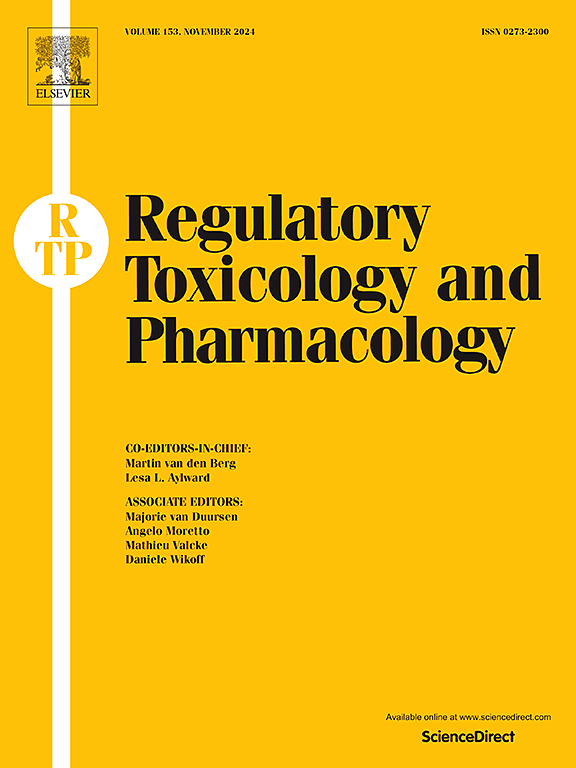新型食品纳米绿藻油的安全性评价
IF 3.5
4区 医学
Q1 MEDICINE, LEGAL
引用次数: 0
摘要
为了评估纳米绿藻油作为一种新型食品原料的安全性,我们进行了全面的毒理学评价,包括急性口服毒性研究、遗传毒性研究、致畸性研究和亚慢性毒性研究。在急性口服毒性研究中,LD50为8.4 g/kg BW。在遗传毒性研究(哺乳动物红细胞微核、染色体畸变和Ames试验)中,与阴性对照相比,所有剂量组均无显著变化。致畸性研究表明,对大鼠的母体体重、生殖能力或胎儿发育没有不良影响,未观察到的不良影响水平(NOAEL)为2.8 g/kg BW。同样,90天的亚慢性毒性研究确定NOAEL为2.8 g/kg BW,因为在体重、血液学、血液生化、尿液分析或组织病理学中未观察到与治疗相关的异常。这些发现支持了纳米绿藻油供人类食用的安全性。本文章由计算机程序翻译,如有差异,请以英文原文为准。

Safety evaluation of Nannochloropsis gaditana oil as a novel food
To assess the safety of the Nannochloropsis gaditana oil as a new food ingredient, we conducted a comprehensive toxicological evaluation, including acute oral toxicity study, genotoxicity studies, teratogenicity study, and subchronic toxicity study. In the acute oral toxicity study, the LD50 > 8.4 g/kg BW. In the genotoxicity studies (mammalian erythrocyte micronucleus, chromosomal aberrations, and Ames test), all dose groups showed no significant changes compared to negative controls. Teratogenicity study demonstrated no adverse effects on maternal body weight, reproductive capacity, or fetal development in rats, with a no-observed-adverse-effect level (NOAEL) of 2.8 g/kg BW. Similarly, the 90-day subchronic toxicity study identified a NOAEL of 2.8 g/kg BW, as no treatment-related abnormalities were observed in body weight, hematology, blood biochemistry, urinalysis, or histopathology. These findings support the safety of Nannochloropsis gaditana oil for human consumption.
求助全文
通过发布文献求助,成功后即可免费获取论文全文。
去求助
来源期刊
CiteScore
6.70
自引率
8.80%
发文量
147
审稿时长
58 days
期刊介绍:
Regulatory Toxicology and Pharmacology publishes peer reviewed articles that involve the generation, evaluation, and interpretation of experimental animal and human data that are of direct importance and relevance for regulatory authorities with respect to toxicological and pharmacological regulations in society. All peer-reviewed articles that are published should be devoted to improve the protection of human health and environment. Reviews and discussions are welcomed that address legal and/or regulatory decisions with respect to risk assessment and management of toxicological and pharmacological compounds on a scientific basis. It addresses an international readership of scientists, risk assessors and managers, and other professionals active in the field of human and environmental health.
Types of peer-reviewed articles published:
-Original research articles of relevance for regulatory aspects covering aspects including, but not limited to:
1.Factors influencing human sensitivity
2.Exposure science related to risk assessment
3.Alternative toxicological test methods
4.Frameworks for evaluation and integration of data in regulatory evaluations
5.Harmonization across regulatory agencies
6.Read-across methods and evaluations
-Contemporary Reviews on policy related Research issues
-Letters to the Editor
-Guest Editorials (by Invitation)

 求助内容:
求助内容: 应助结果提醒方式:
应助结果提醒方式:


